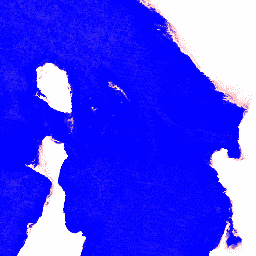Page Summary
-
This dataset, DEA Water Observations Statistics, uses Landsat satellite imagery to classify pixels as 'wet', 'dry', or 'invalid' to provide statistics on water presence.
-
The statistics indicate how many times an area was clearly seen by satellites, how many times water was detected, and the percentage of time water was observed annually.
-
This dataset is a publisher dataset managed by Geoscience Australia and was available from 1987 to 2022, but was removed on March 01, 2025.

- Catalog Owner
- Geoscience Australia
- Dataset Availability
- 1987-01-01T00:00:00Z–2022-01-01T00:00:00Z
- Dataset Provider
- Geoscience Australia NGIS
- Contact
- Geoscience Australia
- Tags
Description
Digital Earth Australia (DEA) Water Observations uses an algorithm to classify each pixel from Landsat satellite imagery as 'wet', 'dry', or 'invalid'. Water Observations Statistics provides information on how many times each year the Landsat satellites were able to clearly see an area, how many times those observations were wet, and what that means for the percentage of time that water was observed in the landscape.
Combining the classified pixels into summaries covering each year gives the information on where water is usually, and where it is rarely. As no confidence filtering is applied to this product, it is affected by noise where misclassifications have occurred in the input water classifications, and can be difficult to interpret on its own.
For more information, please see the DEA Water Observations Statistics Landsat
This product is part of the Digital Earth Australia Program
Bands
Pixel Size
25 meters
Bands
| Name | Units | Min | Max | Description |
|---|---|---|---|---|
count_clear |
count | -32768* | 32767* | Clear count: how many times an area could be clearly seen. |
count_wet |
count | -32768* | 32767* | Wet count: how many times water was detected in observations that were clear. |
frequency |
% | 0 | 1 | Water frequency: what percentage of clear observations were detected as wet. |
Terms of Use
Terms of Use
Citations
Mueller, N., Lewis, A., Roberts, D., Ring, S., Melrose, R., Sixsmith, J., Lymburner, L., McIntyre, A., Tan, P., Curnow, S., & Ip, A. (2016). Water observations from space: Mapping surface water from 25 years of Landsat imagery across Australia. Remote Sensing of Environment, 174, 341-352 doi:10.1016/j.rse.2015.11.003
